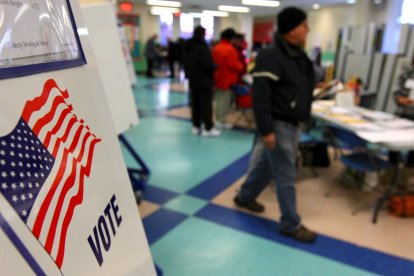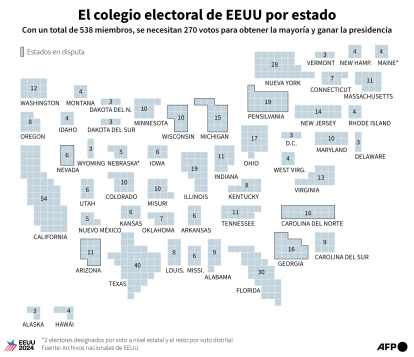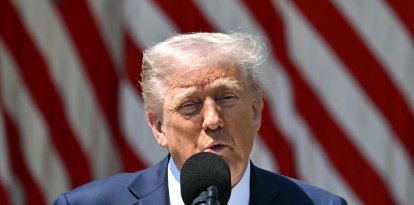The Electoral College: What is it and how does it work?
In this system, candidates depend not on their total popular votes but on the number of electors they win in each state.

U.S. Elections
The United States, unlike many other democratic countries in the world, will not elect its next president based on the direct citizen vote but through the so-called Electoral College, which will determine who will govern the country for the next four years.
This indirect voting system is made up of 538 delegates. To gain access to the White House, Donald Trump or Kamala Harris must obtain, at a minimum, 270 votes, regardless of whether they lose the number of popular votes.
Once Americans cast their vote at the polls, the counting process begins. The electors will meet on December 17 to cast their votes, and on January 6 Congress will announce the name of the next president.
The state distribution of delegates
Not all states have the same number of electoral votes. That division is based on the number of congressmen each state has, except in the cases of Nebraska and Maine, which decide by proportional representation: one for each representative plus two for senators.
California, the state with the most congressmen, has the most electoral votes: 54. It is followed by Texas, with 40; Florida, with 30; New York, with 28; and Pennsylvania and Illinois, with 19 each.

Electoral votes by state
On the opposite side are North Dakota, South Dakota, Wyoming, Alaska, Delaware, Vermont and the District of Columbia, with three electoral votes.
The candidate with the most votes in each state gets the statewide total of electoral votes.
What happens if no candidate gets all 270 electoral votes?
If this situation occurs, the House of Representatives would be put in charge of electing as winner based on who has a greater number of electoral votes, always among the top three candidates. The Senate would determine the vice-president based on the candidate who obtains the highest number of electoral votes among the two remaining candidates.
Five presidents have taken office thanks to the electoral vote
There have been several ocassions in which a president has taken office despite losing the popular vote. Trump managed to defeat Hillary Clinton in the 2016 elections thanks to the fact that he obtained more electoral votes despite having fallen behind the Democrat in the polls with around three million fewer votes.
Another example is that of George W. Bush. The Democratic candidate in the 2000 election, Al Gore, beat the Republican president by about 500,000 more votes. However, Bush overcame the 270 electoral vote barrier, taking office as of January 20, 2001.
In addition to Trump and Bush, three other presidents have won elections despite losing the popular vote.
This system, which dates back to the Constitution of 1787, has been the subject of numerous amendment proposals coming from the Democratic Party to modify or eliminate it, but none have ever succeeded.
RECOMMENDATION






















